The following case study deals with a raccoon removal in Scarborough. A raccoon had broken into the attic be tearing a hole in the edge of the roof. To remove them, a technician installed a one-way door to the entrance of the den, which let the animal leave on its own. To ensure that it would not come back, the technician put mesh along the vulnerable edges of the roof. If you suspect that a raccoon is living on your property, give us a call.
Inspection
The homeowner in this case gave Raccoon Control a call when they heard noises coming from their attic. Given that raccoons were often spotted on the roof, the homeowner suspected that an animal had gotten inside. Raccoons often break into attics for shelter. It was May, so a female might have broken in to raise her kits. A technician quickly came to the scene to investigate.
The first thing our technicians do, no matter the job, is perform a thorough inspection of the premises. This determines where the animals are coming from and every other vulnerability on the property that could let wildlife in. The roof and exterior walls of the home are inspected for holes and damages.
Here, the technician found a gap on the roof’s edge, above the gutter. At its widest, the gap was only about 4 inches wide, but this is enough to fit a raccoon. The roughness of the opening and the presence of wood chips beneath it showed that a raccoon had broken their way through. The raccoon pulled and chewed at the roof until it made a hole that was wide enough for it to fit. Raccoons are smart, determined animals that can tell that the interior of the attic is warm. Some will go to great lengths to get inside.
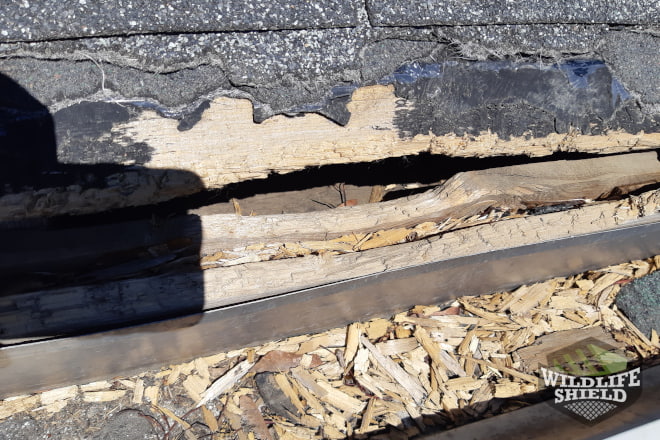
Following the exterior inspection, the technician went into the attic to look for babies. July is late in the season for raccoons, but it is always worth checking. Accidentally separating a mother from her kits may result in more damage to the roof and she forces her way back inside. It’s also inhumane. Kits depend on their mothers for survival, so they may starve to death if they are separated or removed improperly.
No kits were found in the attic, so the technician recommended having a one-way door installed for the adult raccoon. This consists of a plexiglass flap that only swings outward. It lets raccoons out of their dens when they want to leave, which usually only takes a few days at most. Once out, the raccoons realize that they cannot get back in and they find another place to live.
In addition to the one-way door, the technician recommended having more of the roof’s edge excluded with mesh. This would help prevent the raccoon from making another hole in the roof and coming back. The homeowner agreed to do the work immediately.
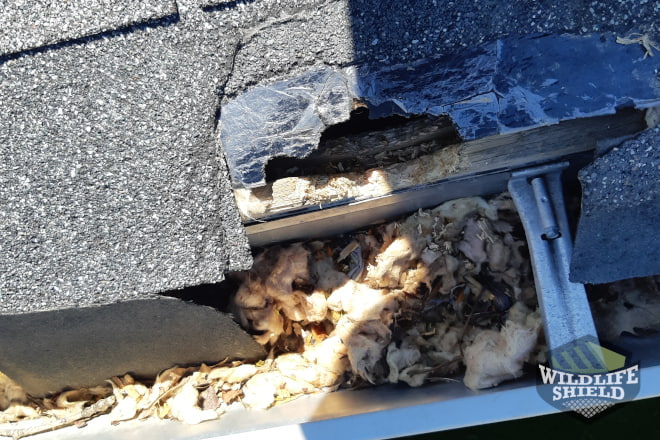
Removal and Exclusion
First, the technician installed a one-way door the den’s entrance. Mesh was installed around it and fitted to create enough space for the animal to get out. The mesh used is strong enough to resist tearing and any attempts from the raccoon to break back in again.
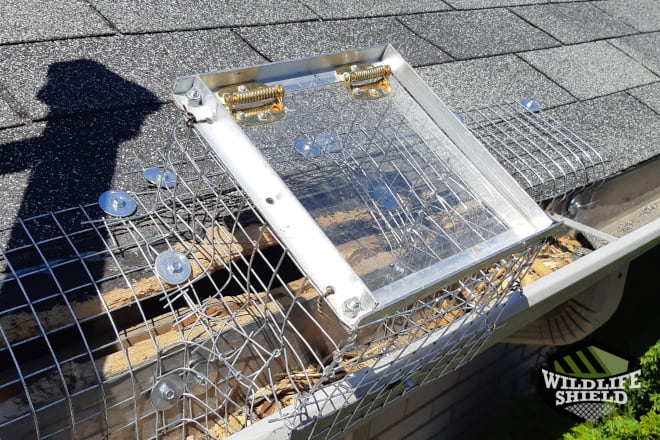
The technician then sealed a total of 10 feet along the roof’s edge. This would prevent the raccoon or any other animal from using it to break back in again.
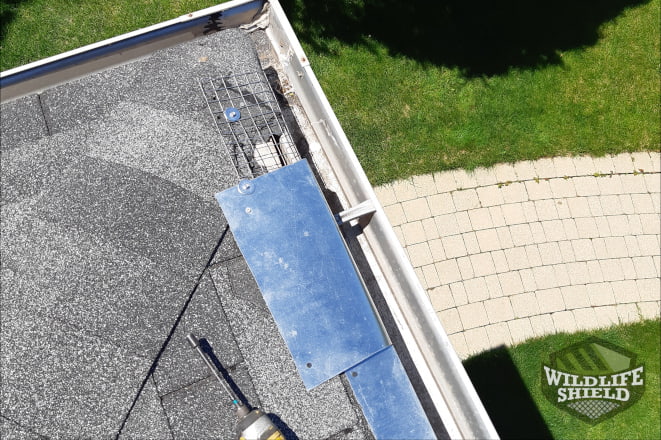
Within a few days, the customer could no longer hear any raccoons. The animal living inside the attic pushed its way through the one-way door and found another place to live. A technician returned in July to remove the one-way door and replace it with mesh.
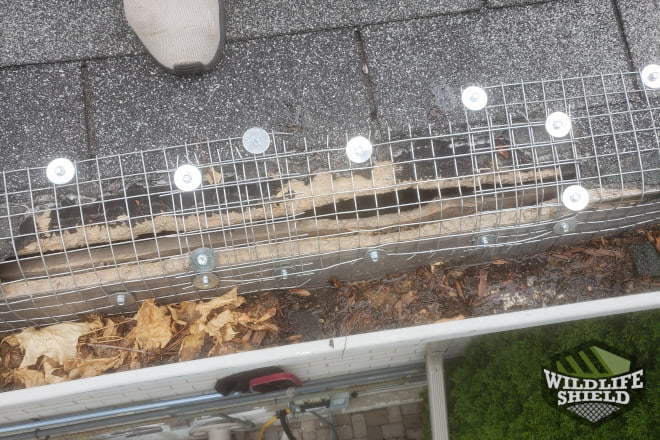
Conclusion
Raccoons are dexterous, determined animals. If they find a gap in the roof, no matter how small, they might tear at it until they can fit through. The raccoon in this case tore at the roof repeatedly, then made themselves at home in the attic. To remove them, a technician installed a one-way door to the entrance of the den.
If there is lots of raccoon activity in your area and you want to keep the animals out, call Raccoon Control. We offer guaranteed raccoon removal and exclusion. We can remove the raccoons on your property humanely and seal off every potential entry point. Call us for raccoon removal in the GTA.
